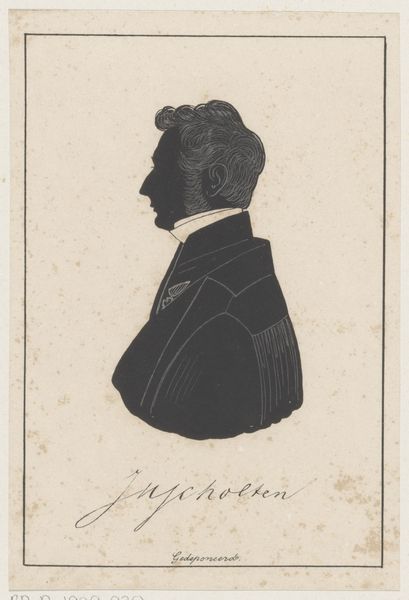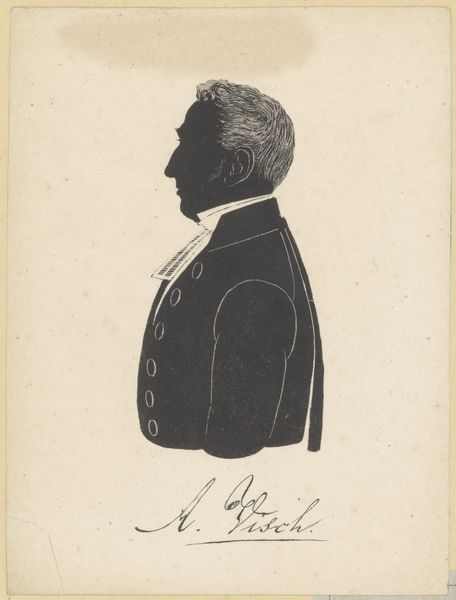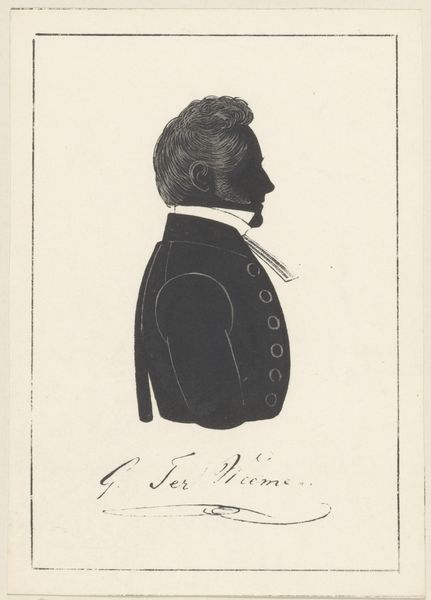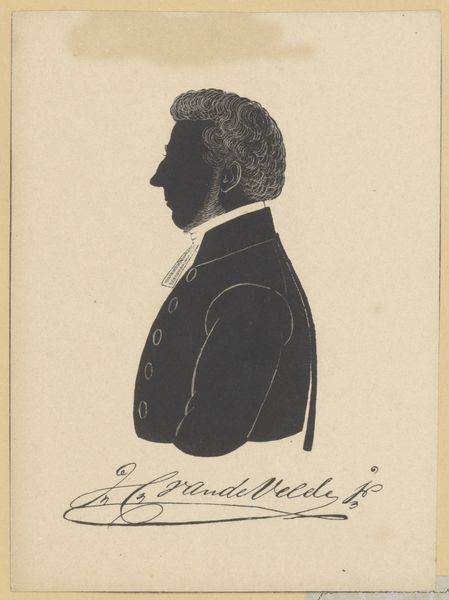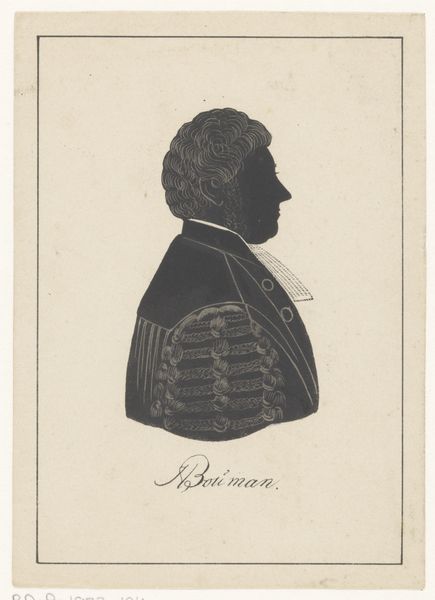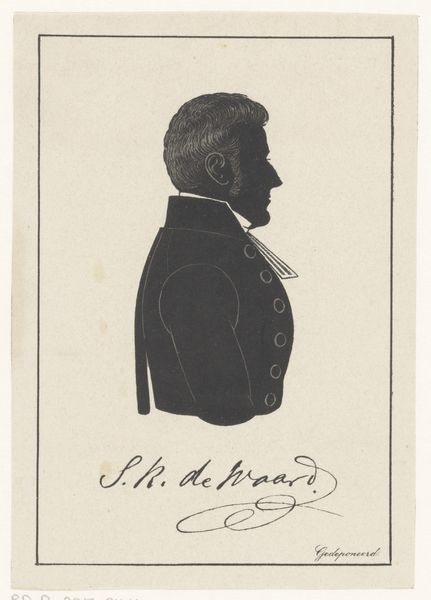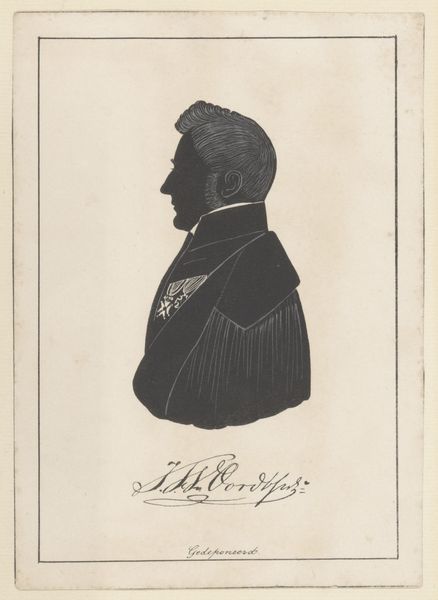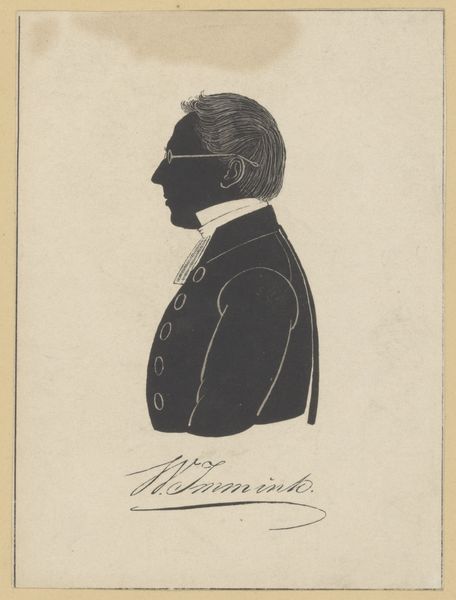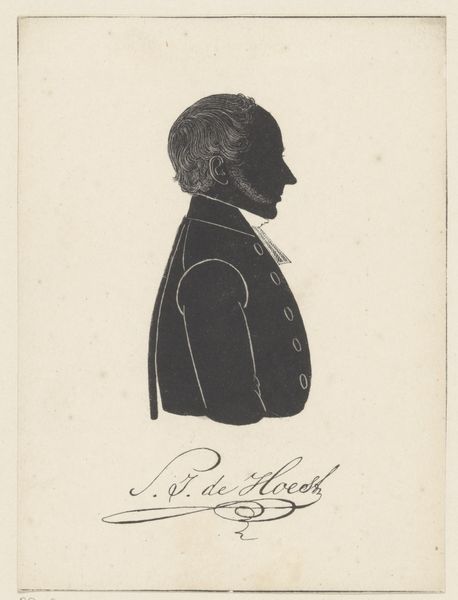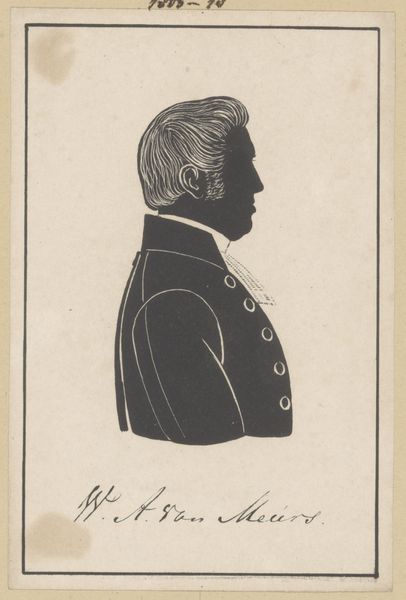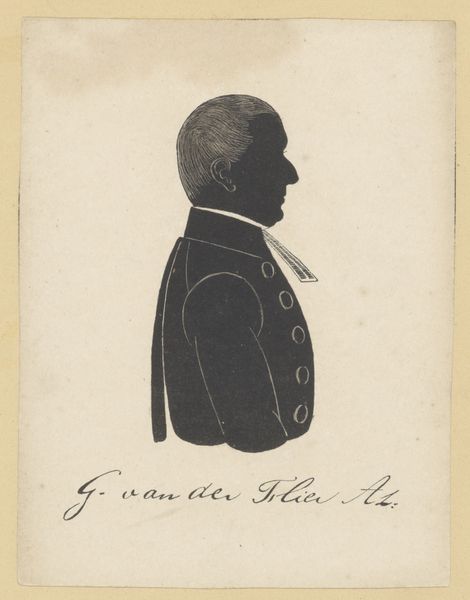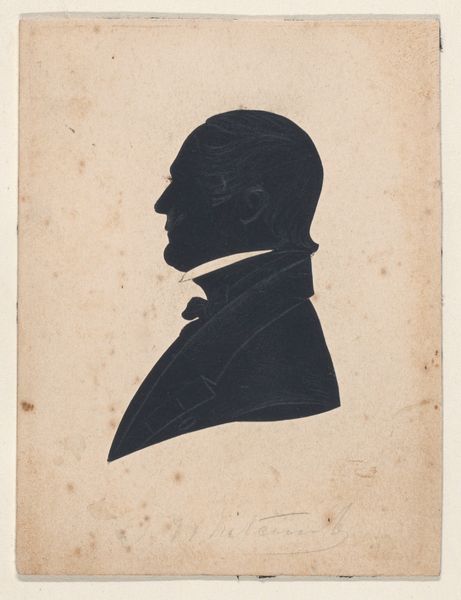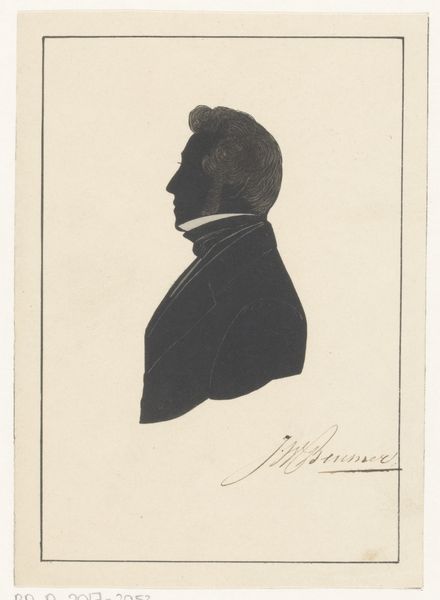
drawing, ink
#
portrait
#
drawing
#
figuration
#
historical fashion
#
ink
#
romanticism
Dimensions: height 151 mm, width 107 mm, height 294 mm, width 243 mm
Copyright: Rijks Museum: Open Domain
Pieter Barbiers IV made this silhouette portrait of Alexander Stramrood, likely in the early 19th century, using cut paper on paper. Silhouettes were a popular and relatively inexpensive way to capture a person's likeness. The process involves tracing a shadow of the subject's profile, then meticulously cutting it from black paper. Notice the sharp, clean edges – these show the skill of the artist. But more than that, silhouettes offered a kind of democratization of portraiture. In an era when painted portraits were only for the wealthy, this craft offered a way for a broader segment of society to participate in image-making. The stark contrast and graphic simplicity of the silhouette aesthetic is really striking. It reduces a person to their most essential outline, suggesting a connection between artistic expression and the social hierarchies of the time. It prompts us to think about who had access to representation, and how craft practices could both reflect and challenge those boundaries.
Comments
No comments
Be the first to comment and join the conversation on the ultimate creative platform.
